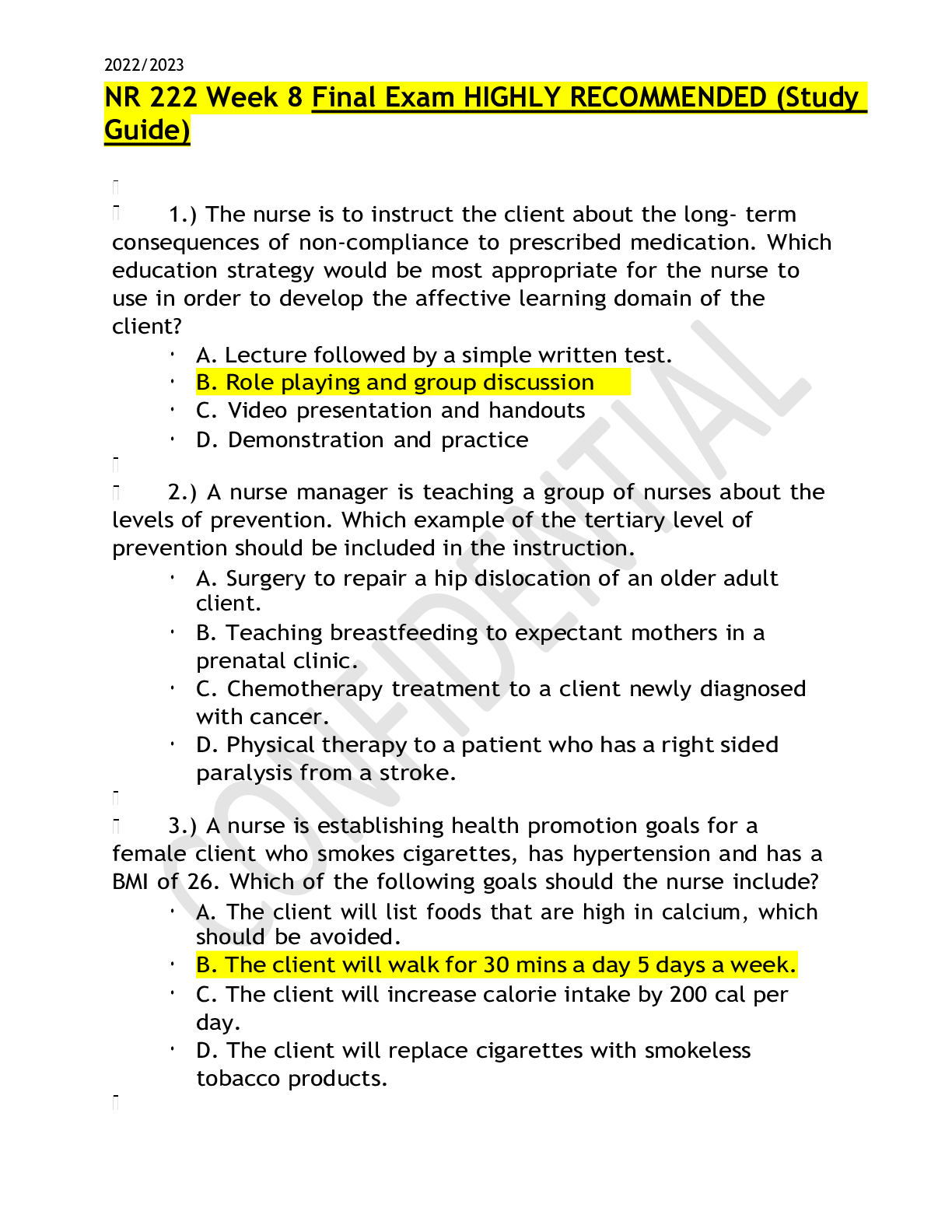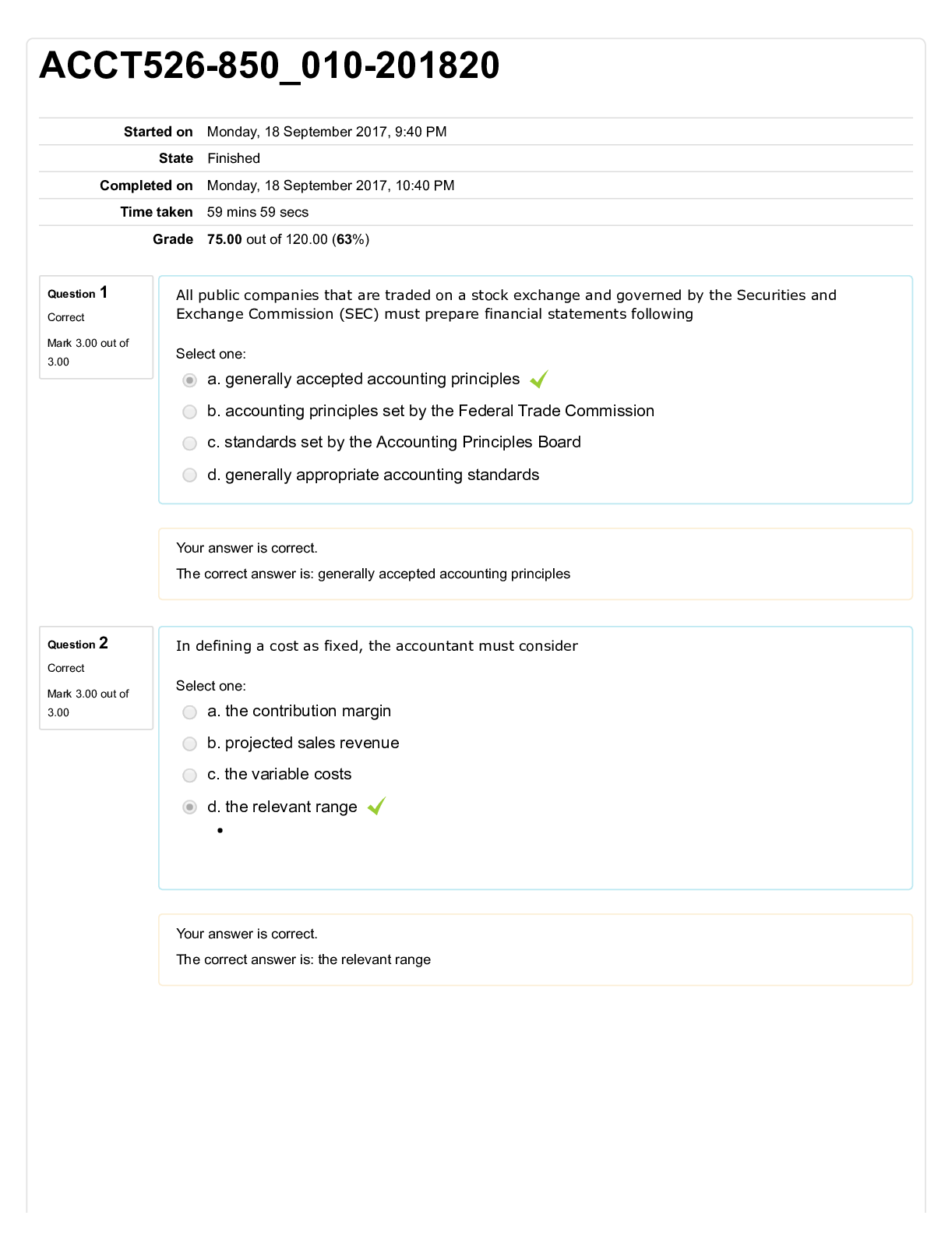NUR 631 Midterm Exam (Version 1, Already Graded A, Grand Canyon University.
Document Content and Description Below
NUR 631 Midterm Exam (Version 1) 1. Question: What is an example of compensatory hyperplasia 2. Question: What causes the rapid change in the resting membrane potential to initiate and action potent... ial. 3. Question: What type of necrosis is often associated with pulmonary tuberculosis. 4. Question: Low plasma albumin causes edema as a result of a reduction in which pressure. 5. Question: When a child inherits a disease that is autosomal recessive, it is inherited from who. 6. Question: Describe the chromosomal defect related to Prader Willi syndrome. 7. Question: What mechanism can cause hypernatremia 8. Question: What are the cause of hyperkalemia 9. Question: What are likely causes of respiratory acidosis 10. Question: When considering white blood cell differentials, acute inflammatory reactions are related to elevations of what leukocyte 11. Question: In which structure do B lymphocytes mature and undergo changes that commit them to becoming B cells 12. Question: Which immunoglobulins is present in blood, saliva, breast milk, and respiratory secretions 13. Question: Which T cell control our limits in the immune response to protect the host own tissue against an autoimmune response 14. Question: The common hay fever allergy is … through a rxn that is mediated by class of immunoglobulins 15. Question: How many months does it take for the newborn to sufficiently protected by antibodies produced by its own B cells 16. Question: A person with type O blood is … to be the universal blood donor because type) blood contains with of the following 17. Question: Cytokines are thought to cause fevers by stimulating the synthesis of which chemical mediators 18. Question: Which cells are primary target for HIV? 19. Question: The mammary glands enlarge during pregnancy primarily as a consequence of what type of hormonal event 20. Question: Perceived stress elicits an emotional anticipatory response that begins where 21. Question: The most common site for a patient diagnosed with prostate cancer is which location 22. Question: Where is the neurotransmitter norepinephrine … ? 23. Question: Thyroid stimulating (TSH) is … to stimulate the thyroid hormone and is inhibited when plasma levels are adequate. What is this an example of 24. Question: What is the action of calcitonin 25. Question: Aldosterone directly increases the reabsorption of what 26. Question: Which laboratory value would the APRN expect to find if a person is experiencing syndrome inappropriate antidiuretic hormone 27. Question: What are visual disturbances a result of pituitary adenoma 28. Question: Which disorder is … by hypersecretion of GH in adults? 29. Question: How is the level of thyroid stimulating hormone in individuals with graves’ Disease impacted? 30. Question: What are clinical manifestations of hypothyroidism 31. Question: A patient dx with DKA has the following lab values PH 7.20, serum glucose 500mg/dl, +ketones, serum K+ 2mcg/L, Serum Na+ 130 mEq/L. The patient reports that he has been sick with the flu for 1 week. What relationship do those values have to his insulin deficiency? 32. Question: When is hypoglycemia … by rebound hyperglycemia … in patients 33. Question: A person has acne, easy bruising, thin extremities, truncal obesity. The clinical manifestations are indicative of which endocrine diagnosis 34. Question: A person may experience which complications as a result of a reduction in parathyroid hormone. 35. Question: Which nutrients are necessary for the synthesis of DNA and the maturation of erythrocytes 36. Question: Which type of anemia is … by fatigue, weakness, dyspnea as well as conjunctiva of the eyes and brittle concave nails 37. Question: In infectious monocleosis (IM) what does the monospot test detect 38. Question: Vitamin K is … for normal clotting factor synthesis by what 39. Question: How is erythroblastosis fetalis … 40. Question: Which type of anemia occurs as a result of thalassemia 41. Question: Which factor is responsible for hypertrophy of the myocardium … with HTN 42. Question: What is the direct action of atrial natriuretic hormone 43. Question: A family friend shows a recent lab report, he would like you to interpret the findings. Lab values show hypercalcemia, hypophosphatemia, elevated alkaline phosphatase, and PTH. What is the cause of this this and risks for 44. Question: Why don’t patient with type 2 DM generally develop ketoacidosis 45. Question: You have diagnosed your patient with DI. In order to determine the causative area, the patient is … an ADH like medication. The lab reports this resulted in an increase urine osmolarity. What diagnose would give this patient 46. Question: What are the earliest signs of diabetic neuropathy 47. Question: A patient has just been … with hypothyroidism by her physician. According to the lab reports it is … to secondary hypothyroidism. What results support the finding 48. Question: Where is the region responsible for motor aspects of speech … ? 49. Question: Why is status elipiticus … a medical emergency 50. Question: Tremors at rest, rigidity, akinesia and postural abnormalities are a result of the atrophy of neurons in what part of the brain 51. Question: A herniation of which disk will likely result in motor and sensory changes of the lateral lower legs and soles of the feet 52. Question: Which condition poses the highest risk for a CVA 53. Question: A man who sustained a cervical spinal cord injury 2 day ago suddenly develops severe HTN and bradycardia. He reports server head pain and blurred vision. What is the most likely explanation for the clinical manifestations 54. Question: Gillian Barre syndrome is … by a viral illness 55. Question: In which disorder are acetylcholine receptor antibodies (IgG) … 56. Question: Antipsychotic drugs block which neurotransmitter receptor 57. Question: What will an infant … with hydrocephalus … observed to demonstrate? 58. Question: Your patient tells your that she has been waking up for days with severe right-side HA, unilateral lacrimation, and nasal congestion. What is the dx 59. Question: Bells Palsy is due to an inflammation of the what cranial nerve [Show More]
Last updated: 1 month ago
Preview 1 out of 8 pages
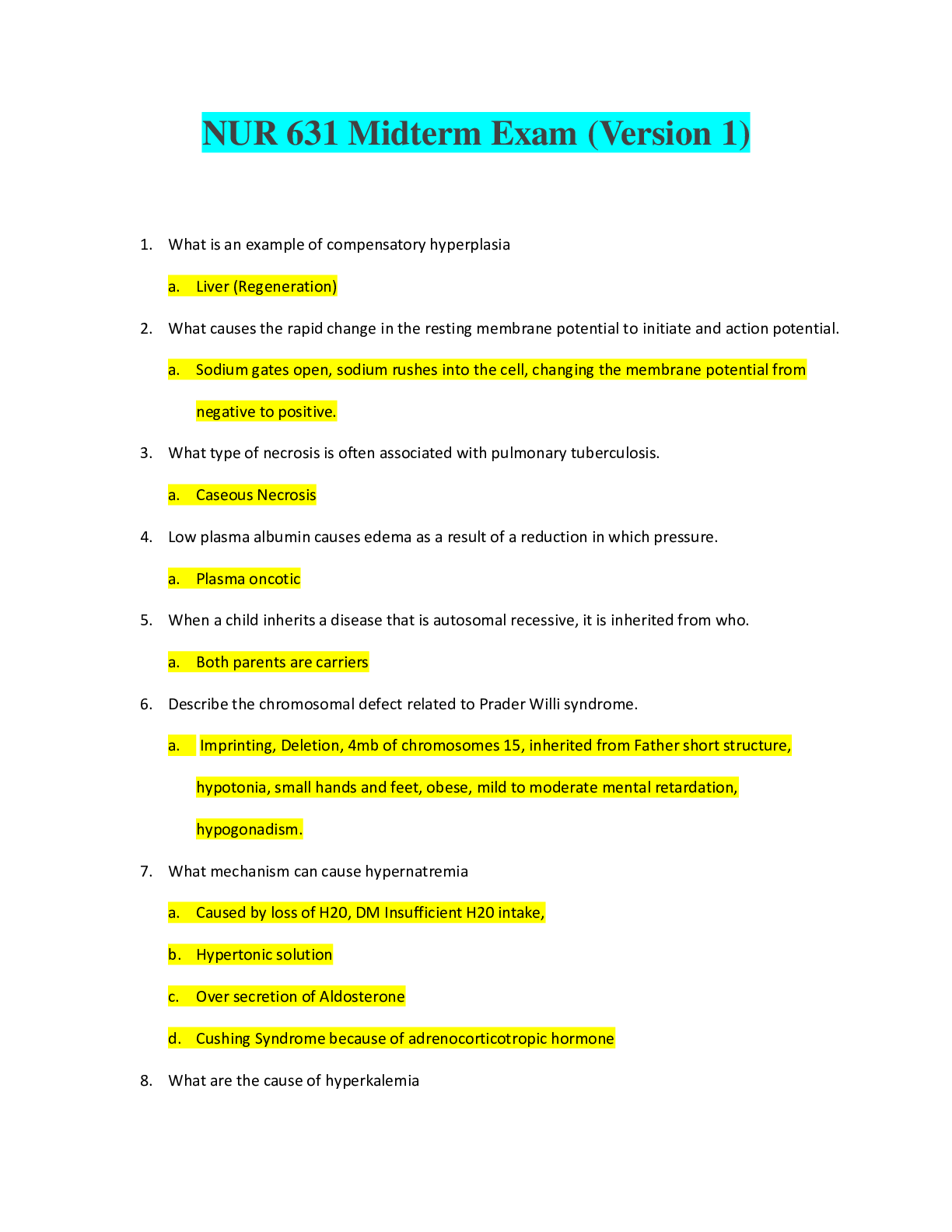
Reviews( 0 )
Document information
Connected school, study & course
About the document
Uploaded On
Feb 17, 2020
Number of pages
8
Written in
Additional information
This document has been written for:
Uploaded
Feb 17, 2020
Downloads
2
Views
212

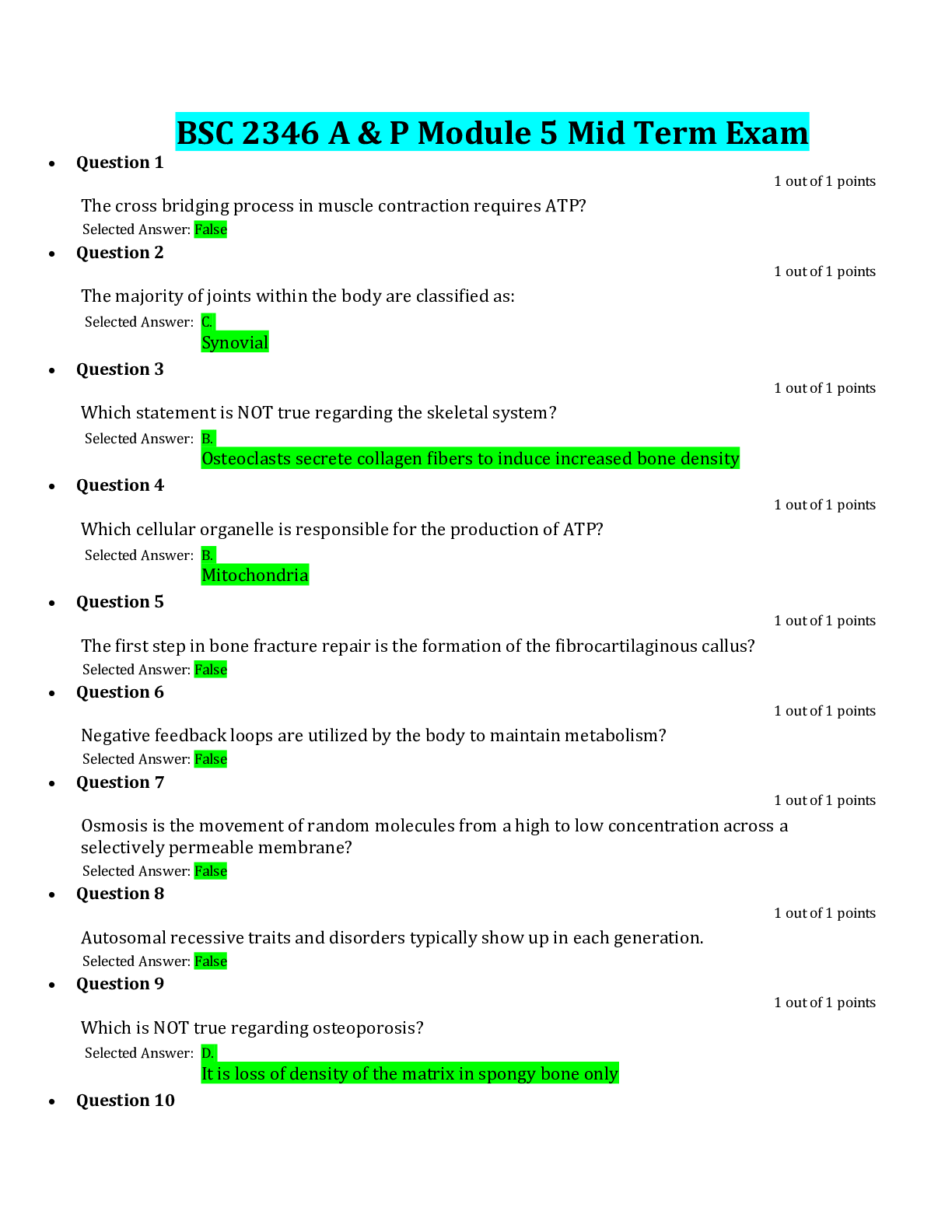


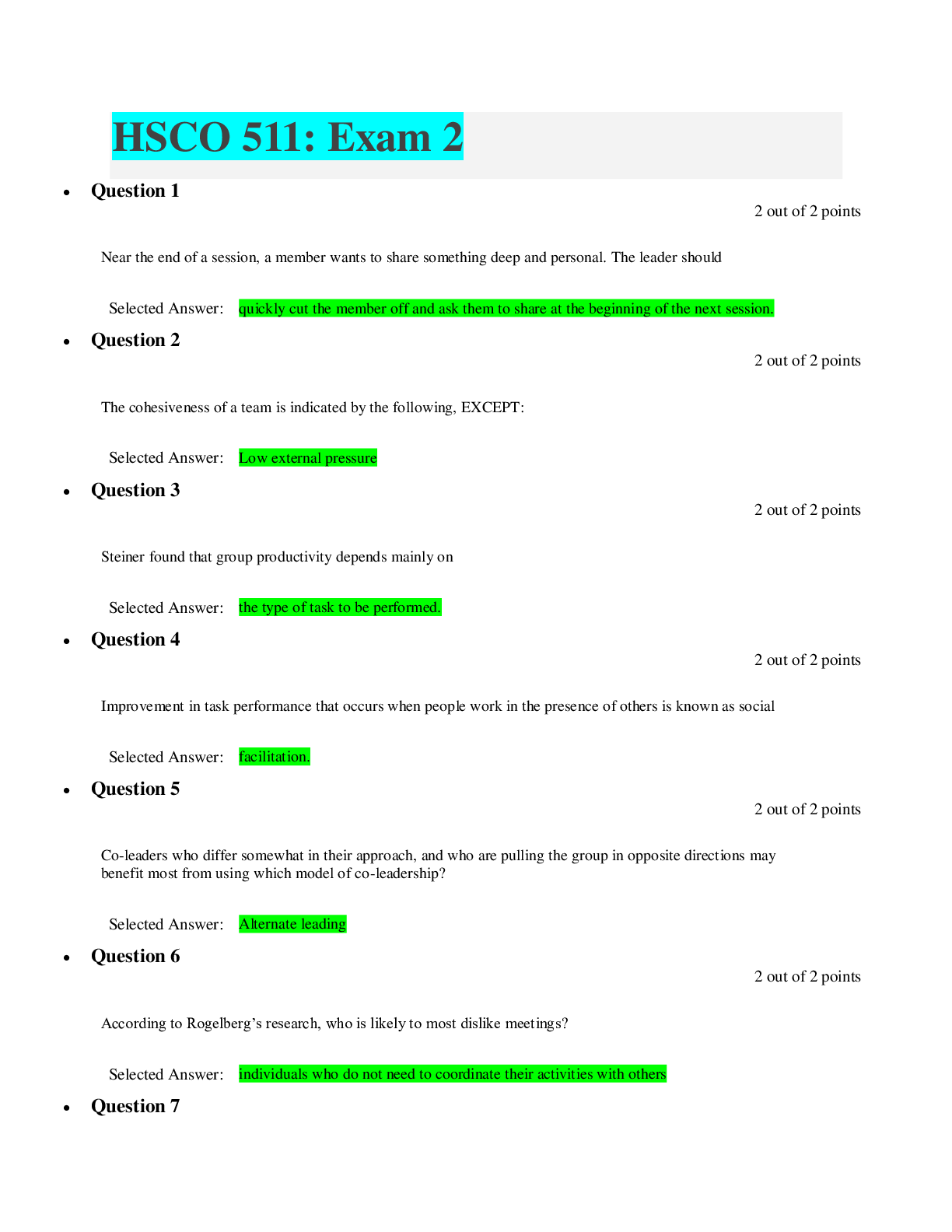
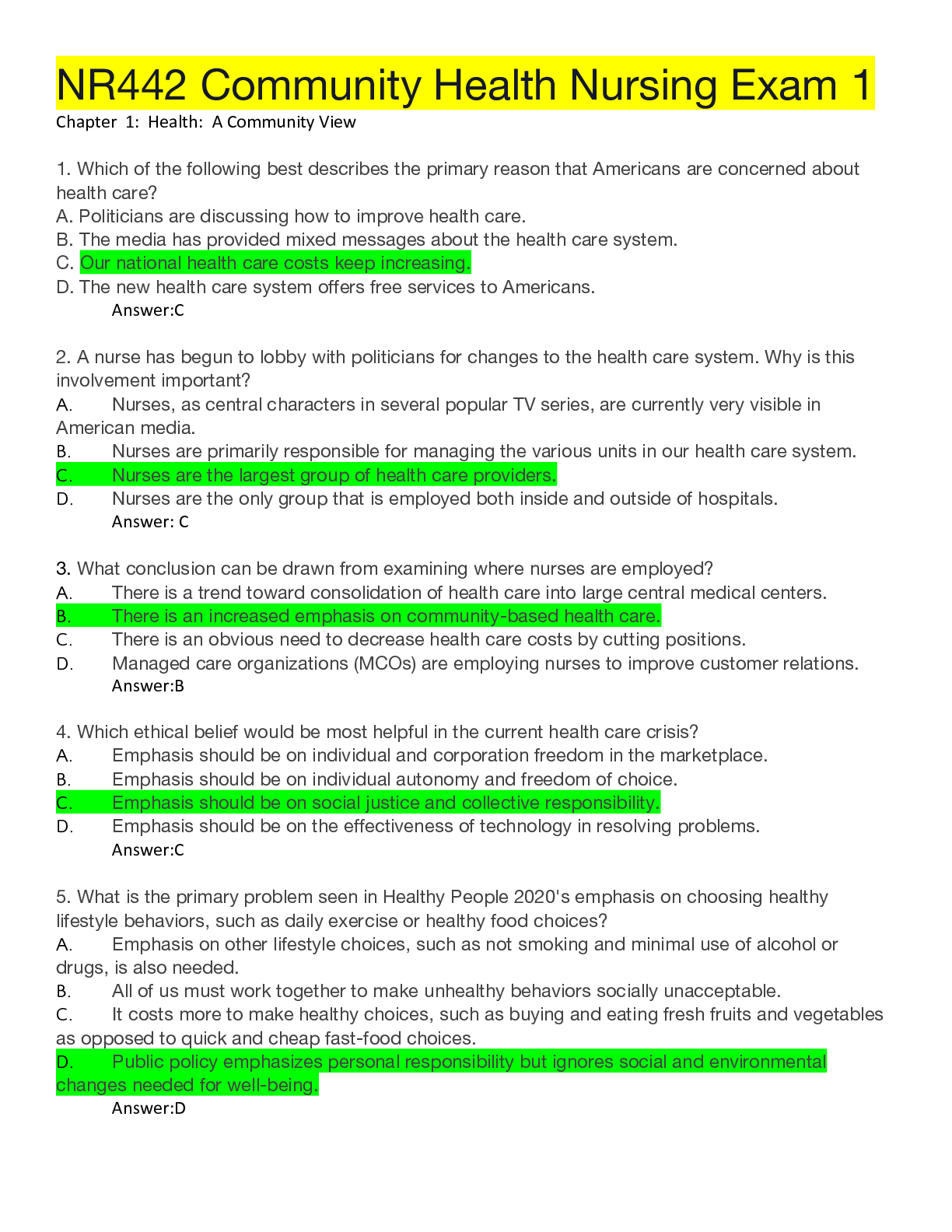
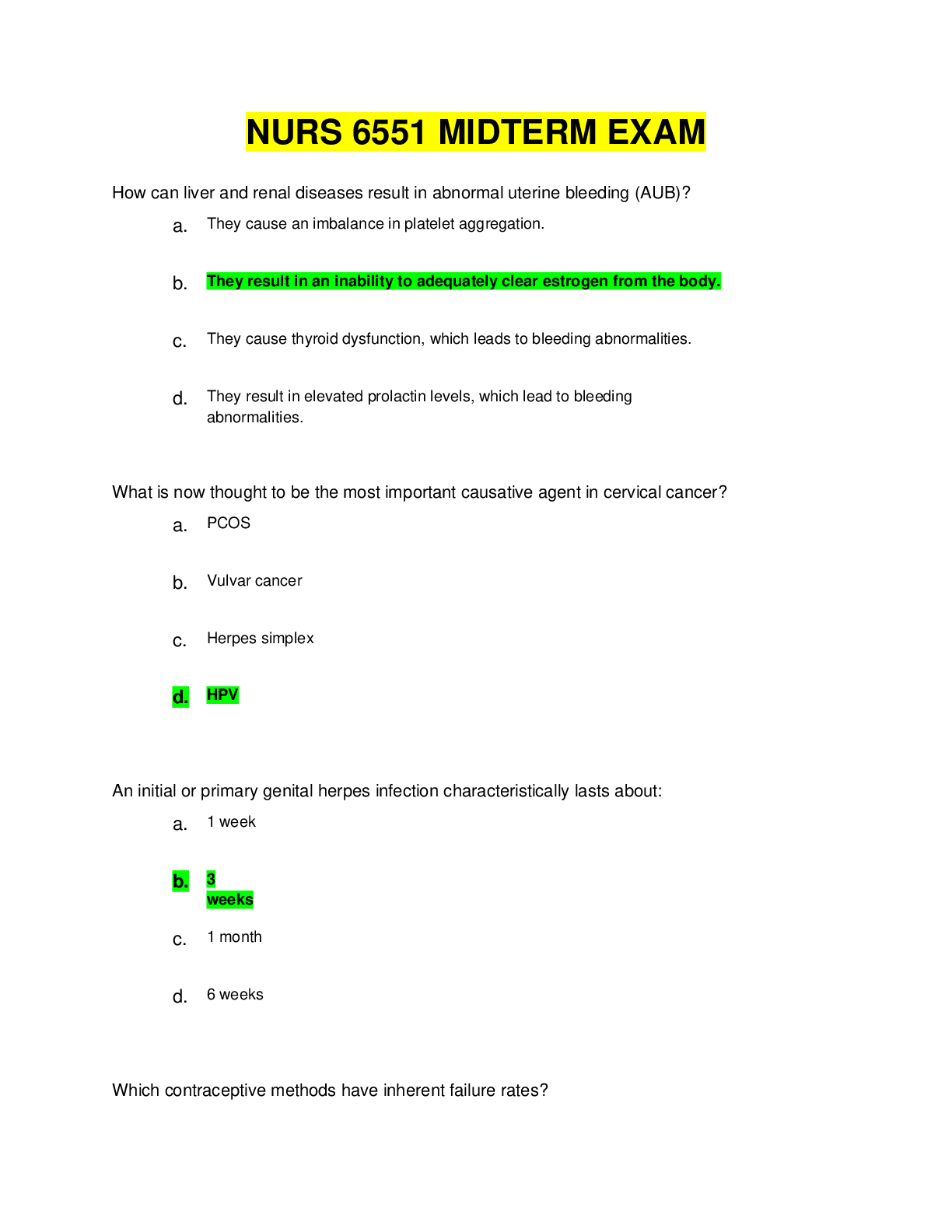
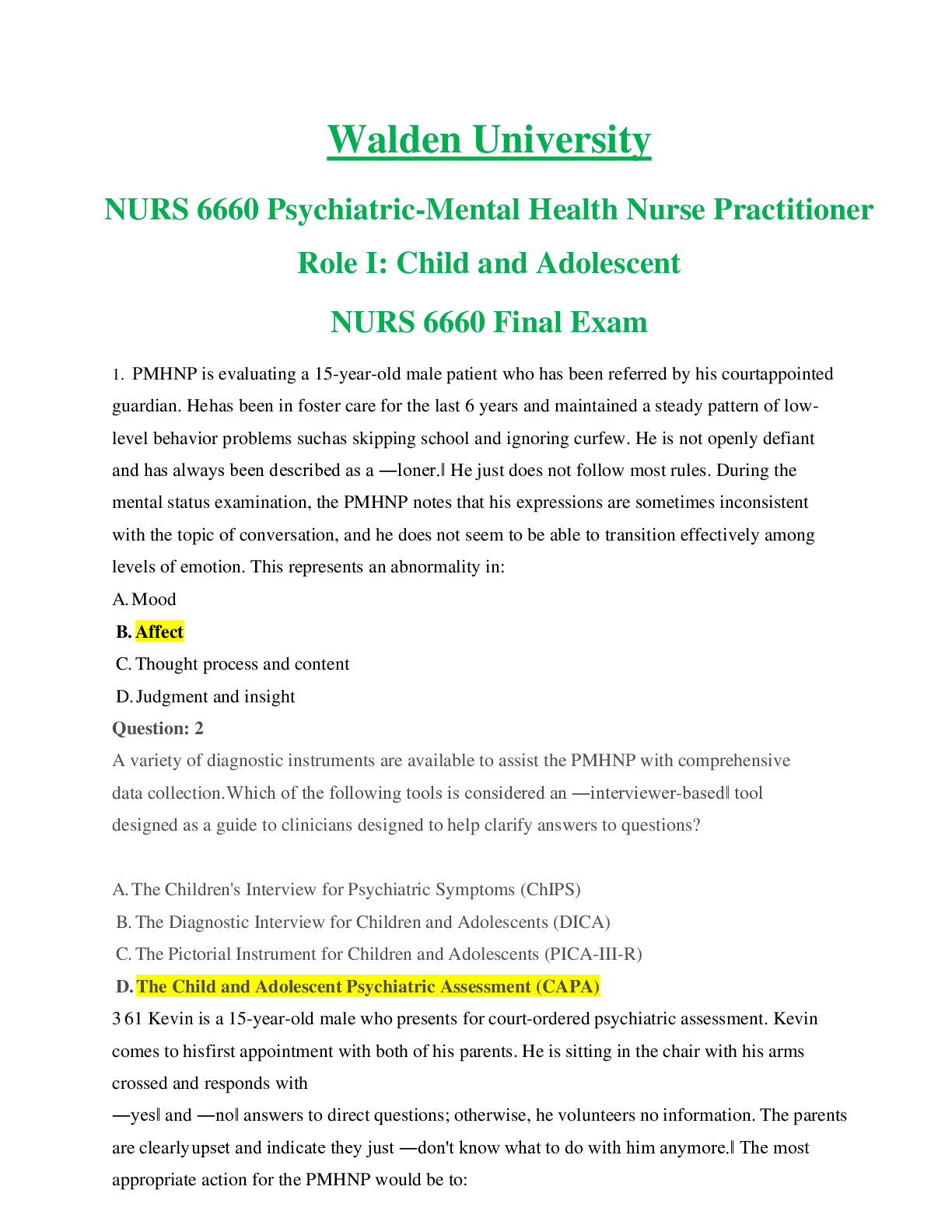


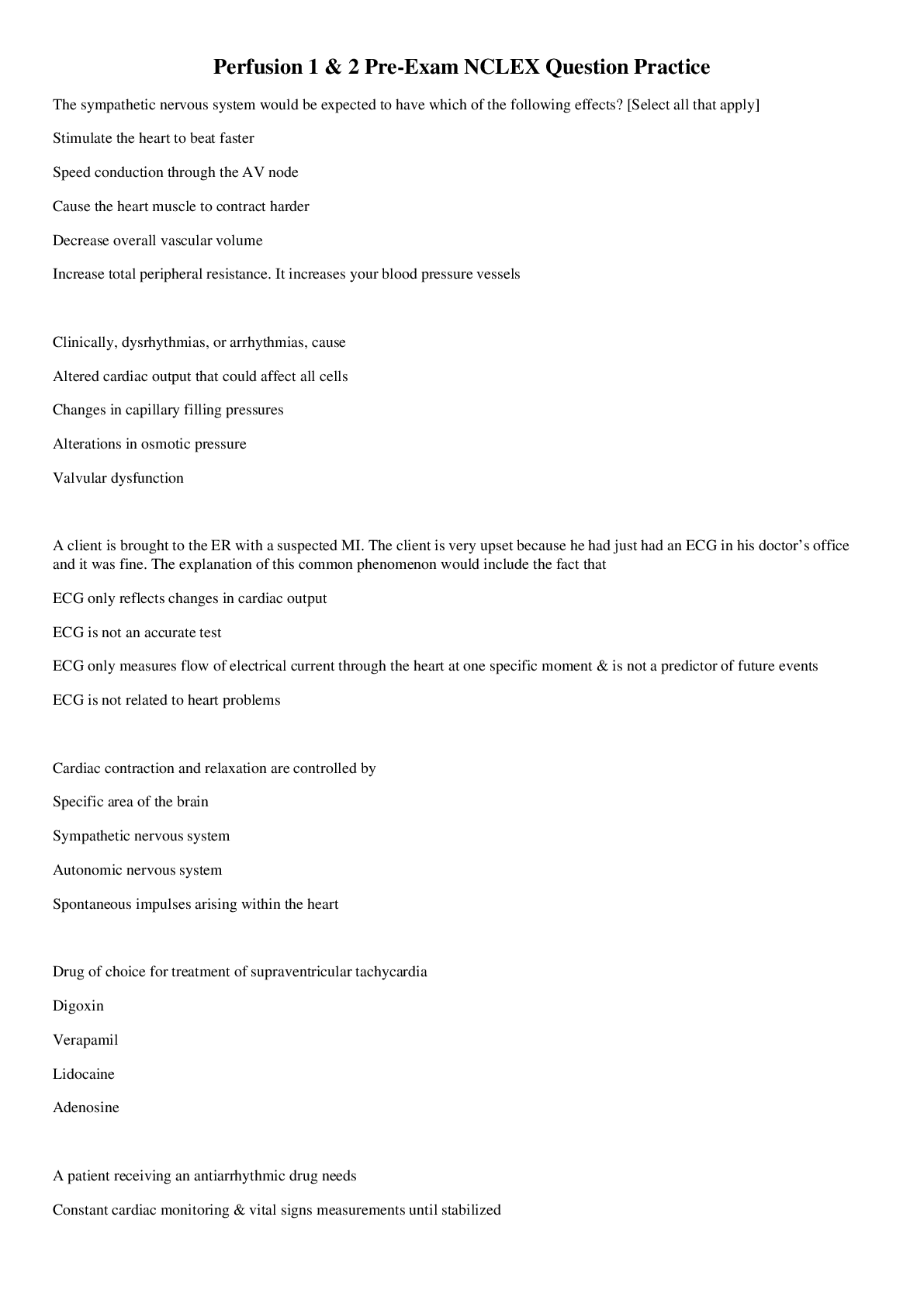
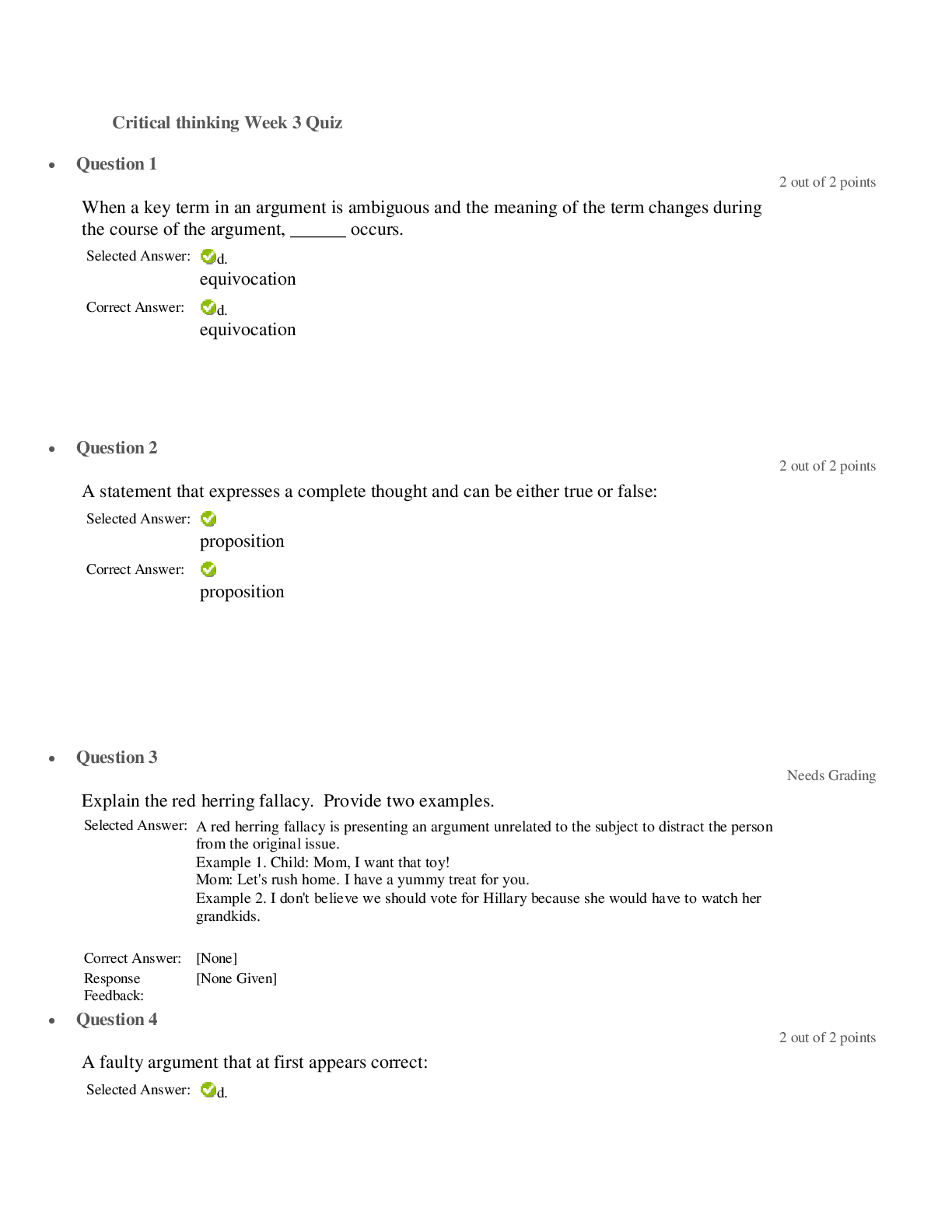


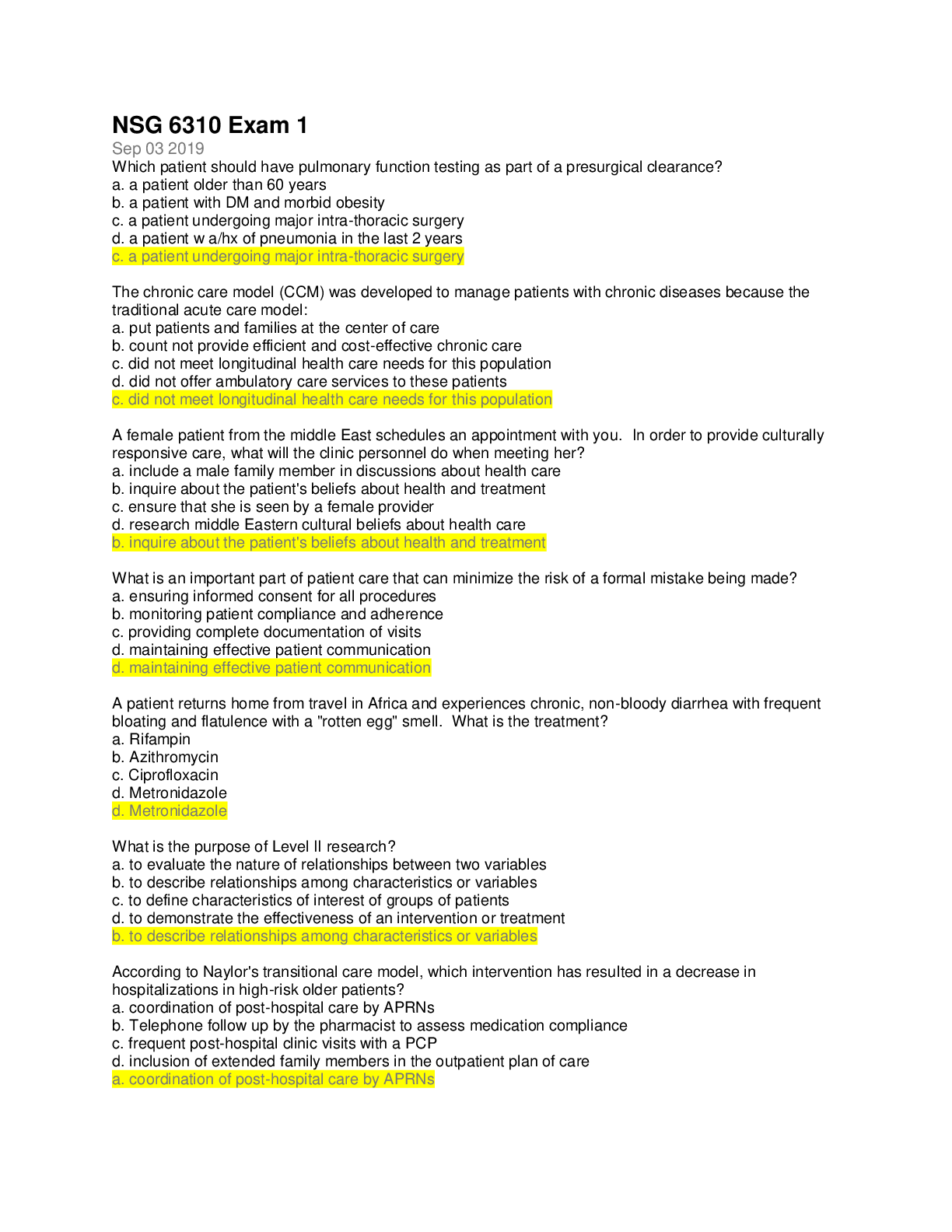
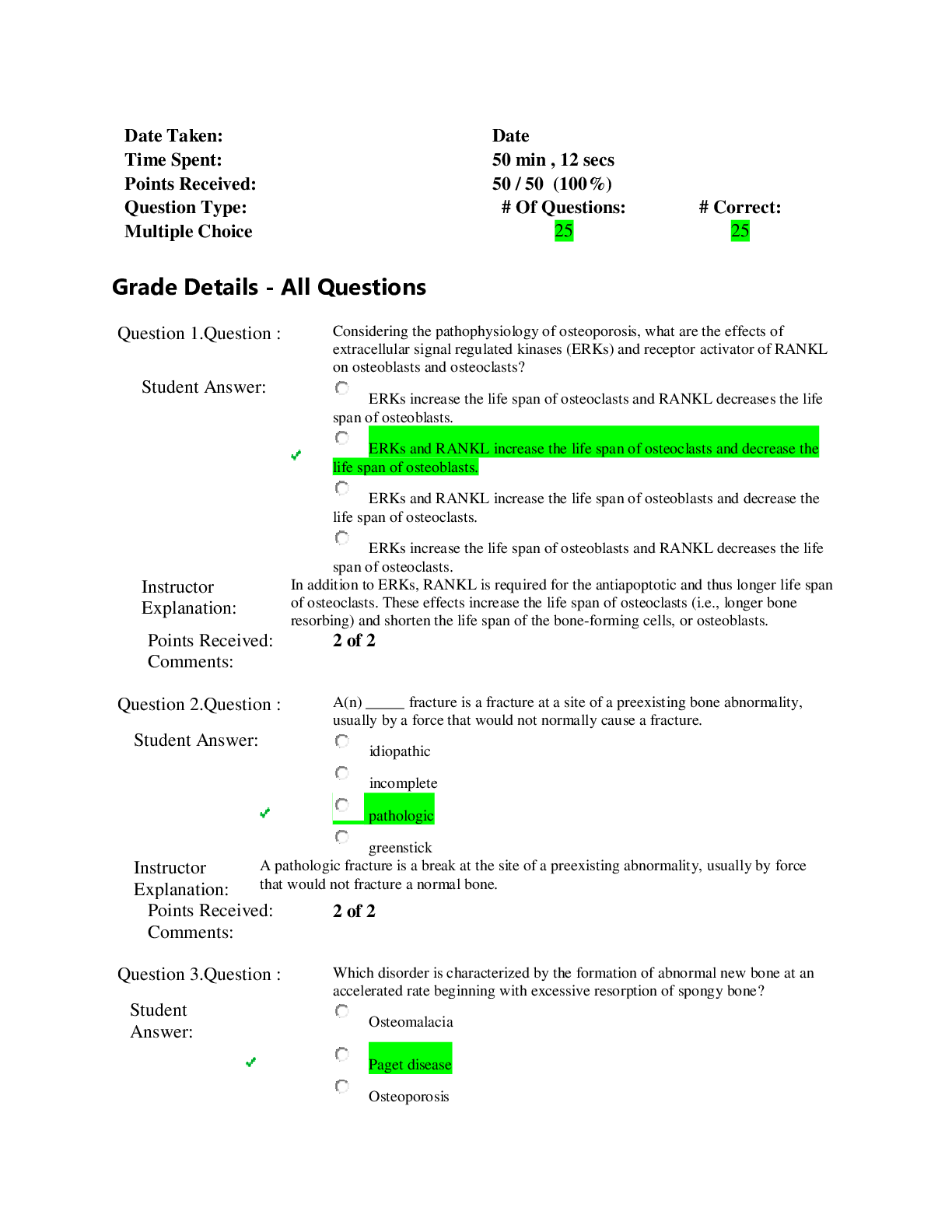

 (1).png)
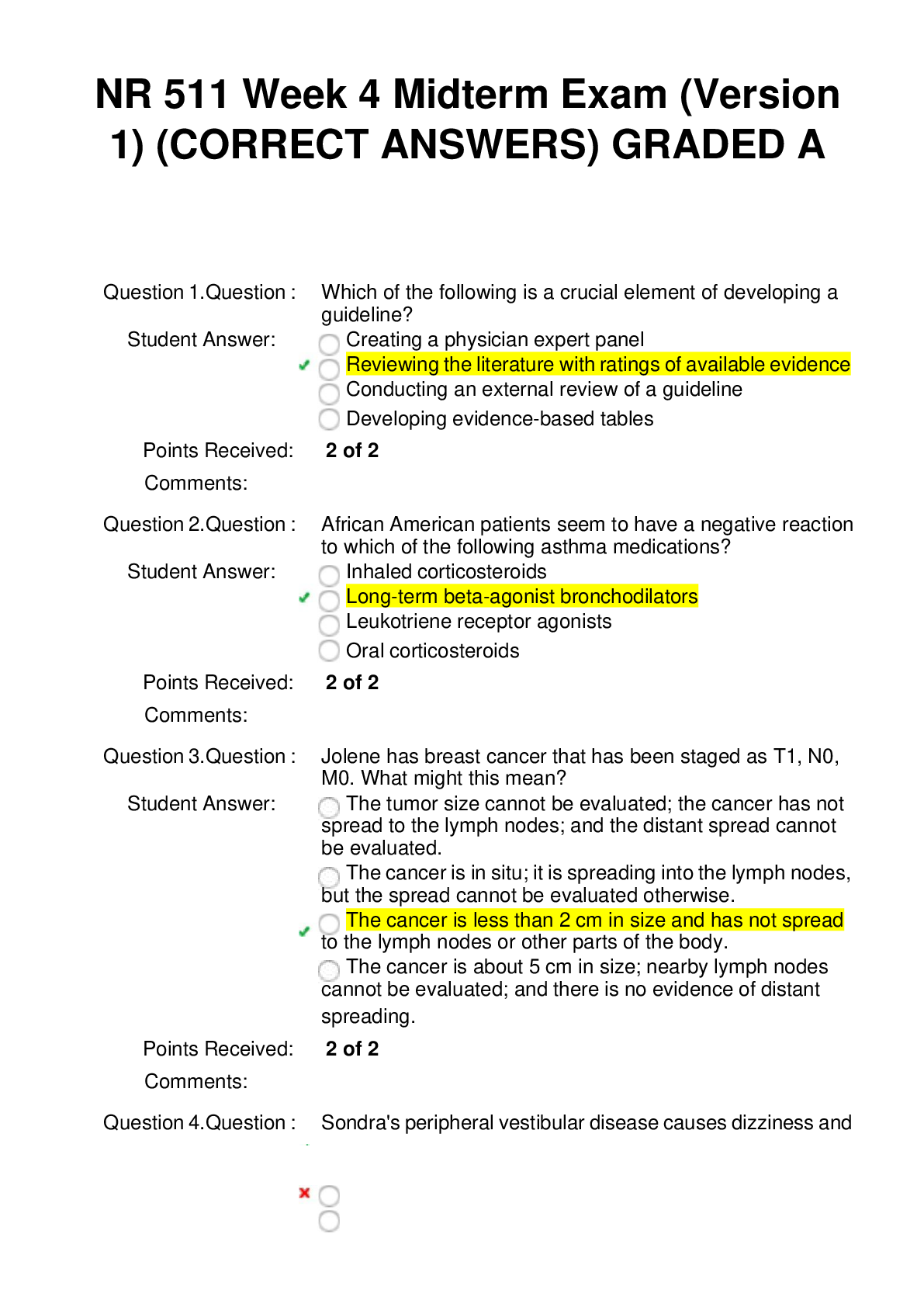
.png)
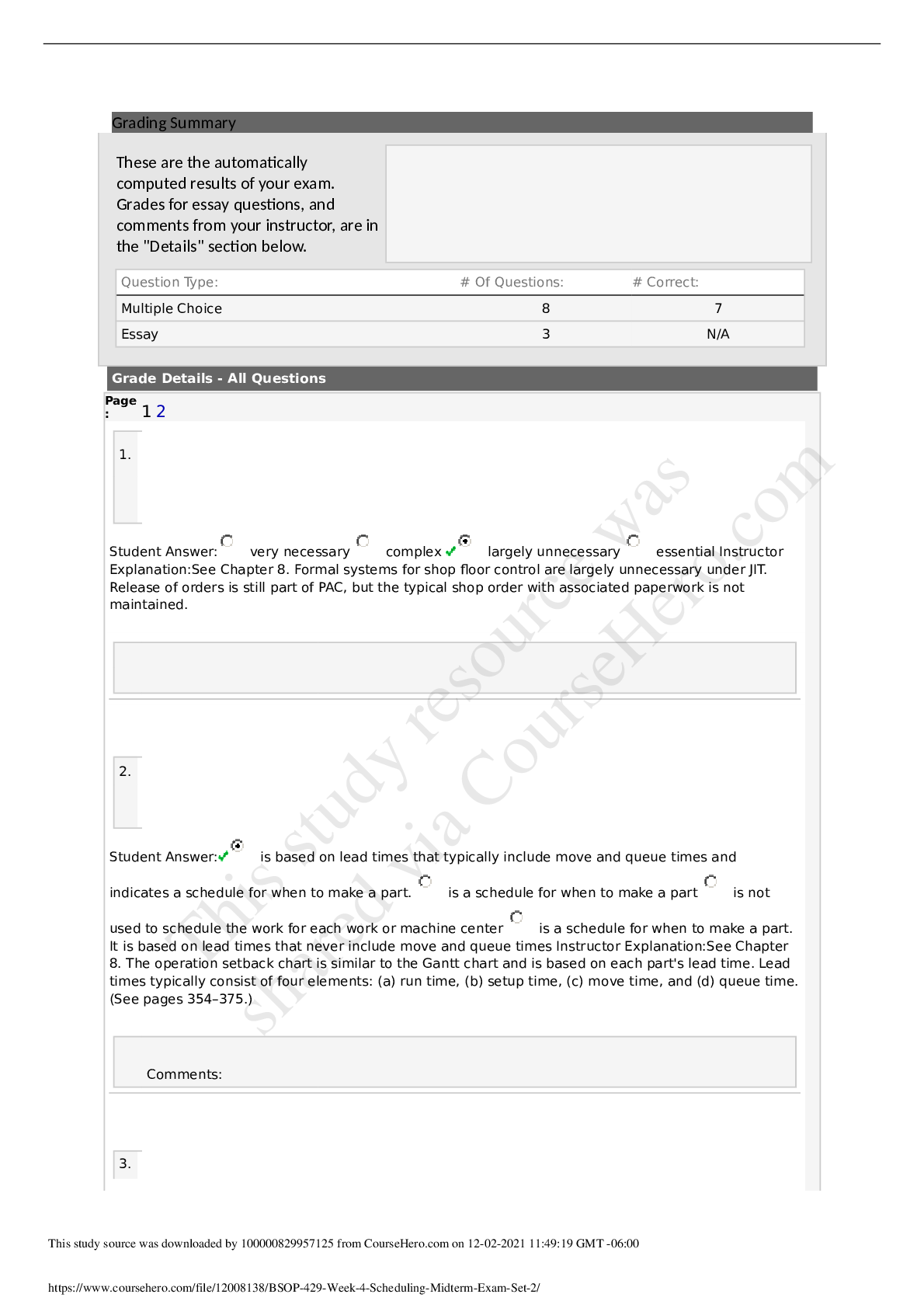




.png)
.png)
.png)
.png)
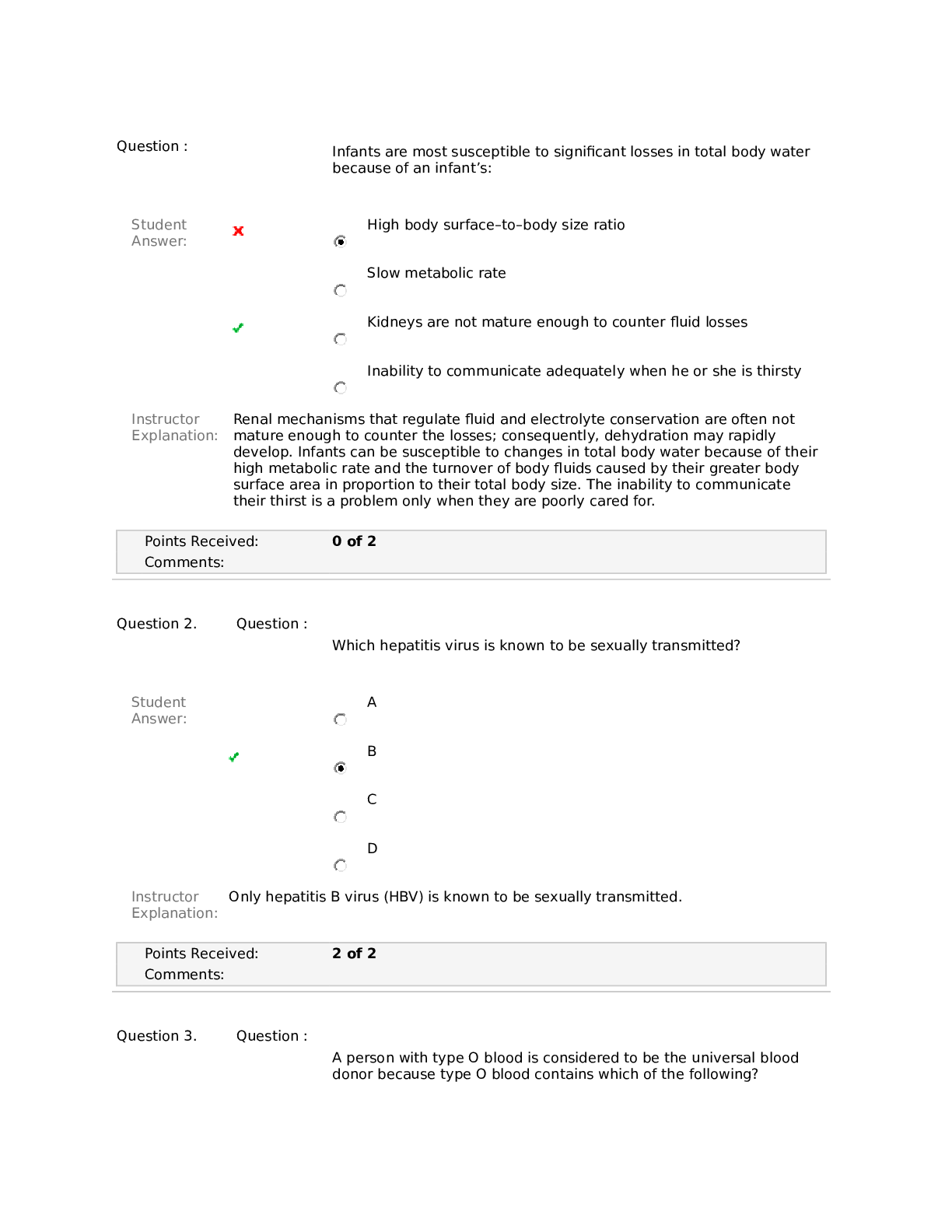
.png)
 NR 508 Week 4 Midterm Exam (New 2021).png)
